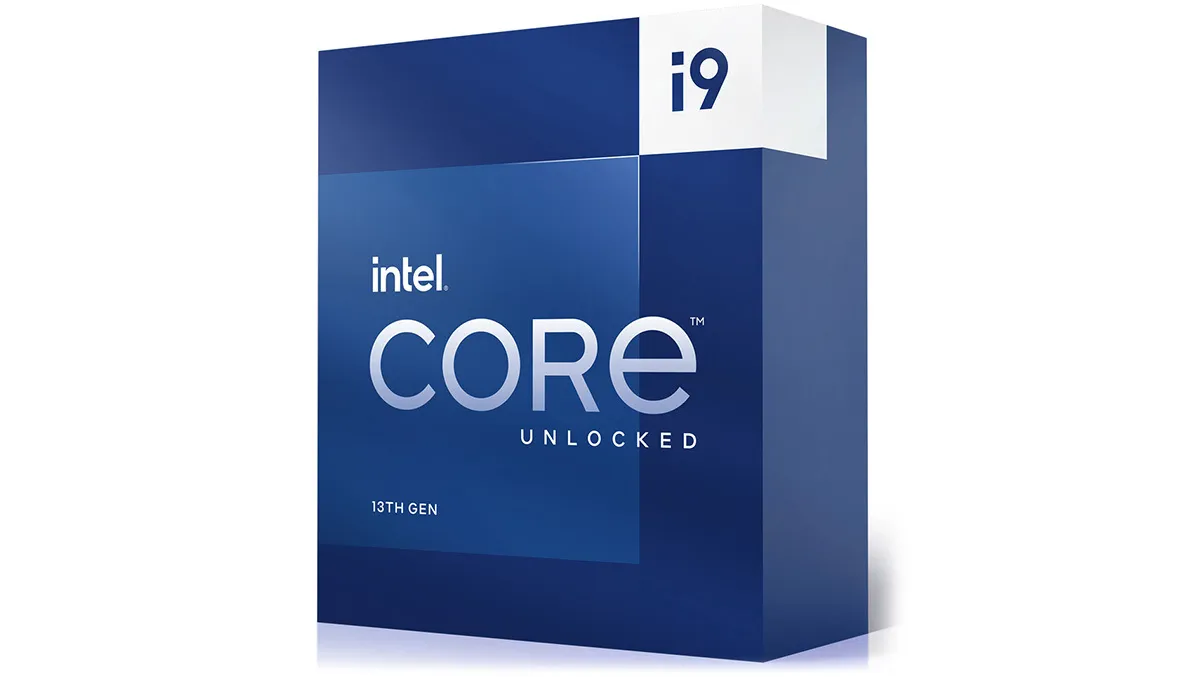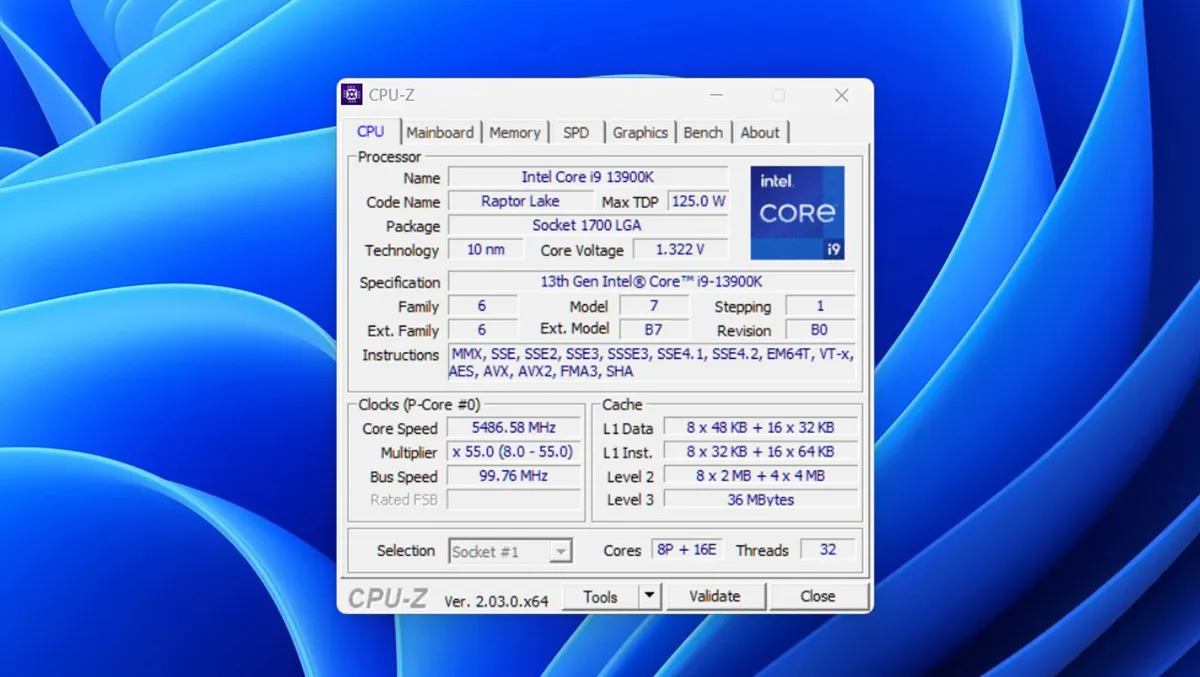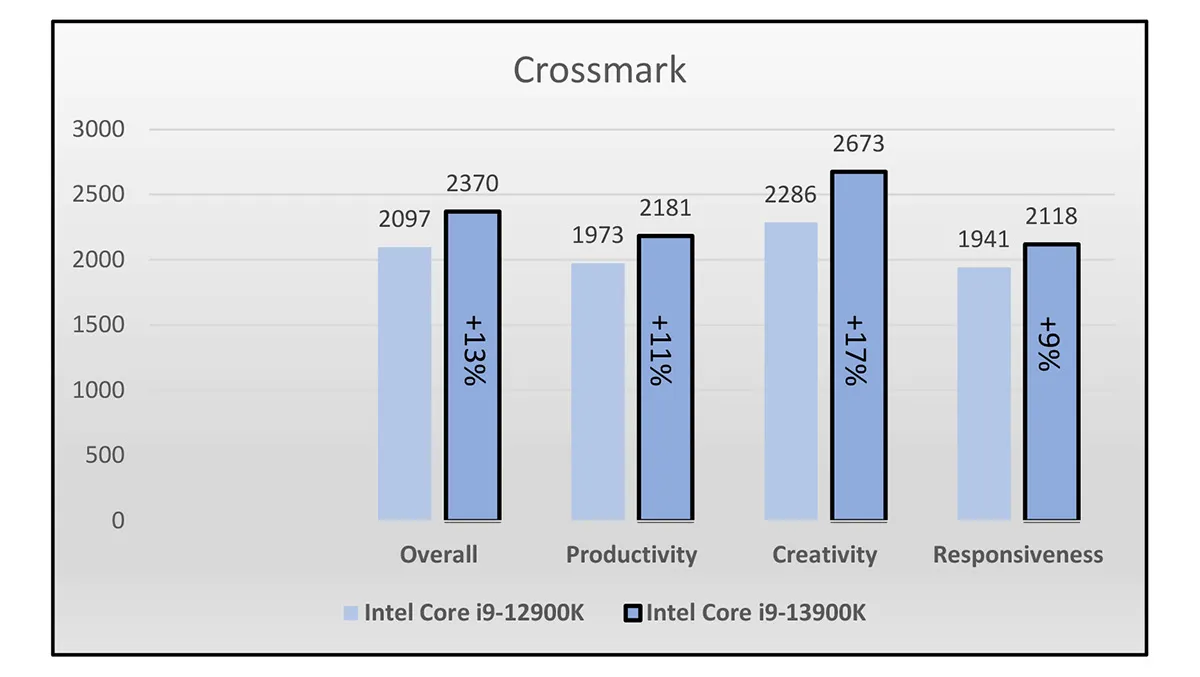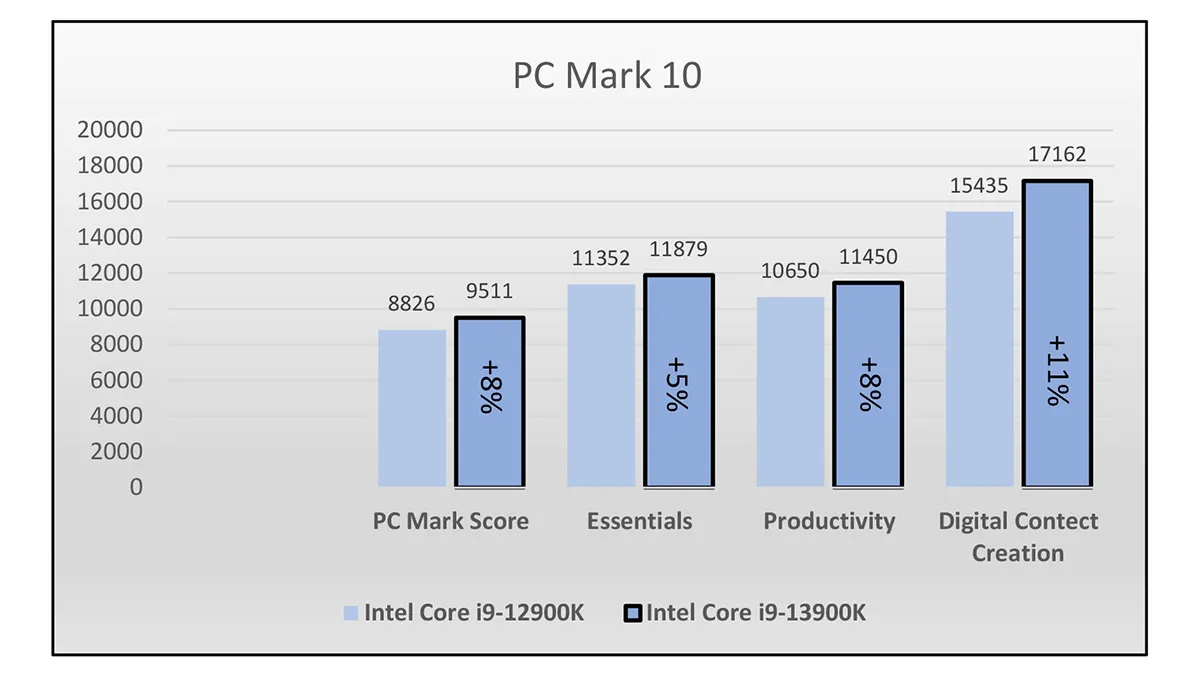
Hands-on review: Intel 13th Generation “Raptor Lake” Core i9-13900K CPU
Intel has released its new flagship desktop CPU, the Core i9-13900K. Boasting 24 cores and 32 threads with a maximum boost clock of 5.80 GHz, does this new processor have the chops across productivity, creative, and gaming applications? We take a look.
Unlike last year's Alder Lake CPUs, it's not all change this year. Intel's Raptor Lake CPUs use the LGA1700 socket introduced with the 12th-generation chips. The 13th gen CPUs also work with Z600-series motherboards, although you may need to update the BIOS for the new generation of CPUs. Raptor Lake supports both DDR4 and DDR5. All-in-all, they are pretty upgrade-friendly CPUs, especially if you are thinking of transitioning from, say, a 12th-gen i5 to a 13th-gen 19.
If you are thinking of upgrading your components from a 11th-gen Intel CPU things are not quite so easy. Other than possibly your DDR4 memory, you will need a new motherboard and likely a new CPU cooler as well.
Like its predecessor, Intel Core i9-13900K is an Intel 7 (10nm) microprocessor. It features 24 cores divided up into eight performance cores and 16 efficient cores. The performance cores carry out the important tasks with the efficient cores left to perform background and housekeeping duties. The 13th generation CPU doubles the efficient core count from the last generation.
The Intel Core i9-13900K's performance cores have a base frequency of 3.0GHz with a maximum turbo frequency of 5.40GHz, whilst the efficient cores have a base frequency of 2.2GHz and a max turbo frequency of 4.3GHz. The CPU's max turbo frequency is touted as 5.8GHz running a single core. On paper, these are relatively small gains over last year's Core i9-12900K.
The unlocked K suffix CPU has integrated graphics supplied by the same Intel UHD Graphic 770, slightly boosted from the last generation. Technology-wise, the main draws are the support for faster DDR5 memory up to 5600 MT/s, with an increased memory bandwidth of 89.6 GB/s. The Z790 chipset motherboards, if you go for one, support more PCIe 4.0 lanes and an extra USB Type-C socket.
In the absence of being able to obtain a DDR5 motherboard in time, and the lack of any components that will take advantage of the Z790 chipset's capabilities, I stuffed the sample Core i9-13900K that Intel set over in my trusty MSI Z690 Carbon WIFI motherboard. Like most manufacturers, MSI recently released a BIOS update to prepare the motherboard for the new generation of Intel CPUs. If you are thinking about doing the same, remember to update the motherboard with your 12th-gen CPU still installed, before swapping out for the new CPU, as it'll likely not work otherwise. Whilst I'll be checking a Z790 motherboard later, I don't expect any noticeable performance gains between a Z690 motherboard and a new Z790 board.
I used my standard tests to assess the performance of the new Intel CPU. These are a mixture of consumer and professional benchmarking applications: BAPCo's Crossmark, UL's Procyon, PC Mark 10 and 3DMark, and Cinebench R23. I also dipped into Intel's own Extreme Tuning Utility to stress the chip and check for throttling.

The benchmark test all showed an improvement over last year's Intel Core i9-12900K, which you'd expect. The percentage increase, however, very much depended on the application.
Crossmark recorded the Intel Core i9-13900K as having a 13% overall performance increase over the Core i9-12900K. The gain for creativity was 17%, productivity 11%, and responsiveness 8%.

Procyon, which uses Microsoft Office and Adobe applications for real-world tests had gains of 16% for office productively, 19% for photo editing, and 6% for video editing. PC Mark 10 gave the Intel Core i9-13900K a score 8% higher than the Core i9-12900K, with 5% gains for essentials, 8% for productivity, and 11% for digital content creation.

Cinebench R23 tests the CPU's 3D rendering capabilities by generating a photoreal image via two tests, one using only one core and another using multiple cores. The single core result had the Core i9-13900K performing 16% faster than last year's i9 and for the multi-core test a whopping 49% faster.

The 3D Mark Time Spy Extreme benchmark is really a GPU test rather than for a CPU, but it does serve to illustrate the potential performance effect of a more powerful CPU when playing games. The overall 3D Mark score showed a 5% increase for the new CPU over its predecessor.

The GPU score, being the same RTX 3090 used for both tests, was, unsurprisingly, virtually identical. The CPU score, however, showed a performance increase of 41%.
It would seem that the generally higher spec across the board of the Intel Core i9-13900K is achieving a 5%-10% performance increase over the 12th generation i9, be this higher clock speeds and optimisations. It would also seem that the increased number of efficient cores also gave a performance boost of up to 40-50% with applications that make good use of multiple cores. This is also evident in the 3D rendering results and creative application tests. And this makes sense, as Intel has traditionally marketed the i9 for these sorts of applications.
You also can't overlook the increased performance that the Core i9-13900K brings to gaming. Of course, it very much depends on the game, but even a 5% increase could gain you an extra ten frames per second, or more for CPU-dependent games.
The Intel Extreme Tuning Utility is an application designed to allow users to easily overclock their unlocked CPUs, like the Core i9-13900K (the 'K' signifying that it is an unlocked CPU). The application also comes with a stress test and plenty of CPU monitoring. It's not the best bit of software, but it is free. I find it useful for seeing if there are any thermal issues causing performance throttling.
A ten-minute run of the Intel Extreme Tuning Utility stress test had the CPU cores heating up to just over 90ᴼc. Whilst the junction temperature, the maximum temperature allowed at the processor die, is 100ᴼc I was surprised to see such temperatures at stock speeds. I also noticed some thermal throttling during the stress test. Of course, this is a total artificial test and not indicative of the ordinary activities of the CPU.
The test rig was being cooled by a Corsair H150i Elite LCD all-in-one cooler, which has three 120mm fans. Switching the fans from "balanced" to the louder "extreme" settings, bought the stress test temperatures down just below 90ᴼc and all but eliminated the thermal throttling issue. The takeaway is that these CPUs run hot, which may present an issue with overclocking without a very robust cooling solution.
I've recently tested AMD's flagship desktop CPU, the Ryzen 9 7950X. In my tests, by and large, the Intel Core i9-13900K scored about the same, if perhaps slightly better than the AMD CPU. The difference between the two chips is more down to price and vendor loyalty (and perhaps Intel's chips still supporting DDR4) than anything else.
The Intel Core i9-13900K is a powerhouse of a CPU. It raises the bar for Intel's desktop CPU performance. It's not a major step forward from the 12th-generation chips, but the gains are significant, especially for multi-core applications such as 3D rendering, image manipulation, and video editing. Gamers will also see improvement, but from a price/performance point-of-view may be better off with an i5 or an i7.


